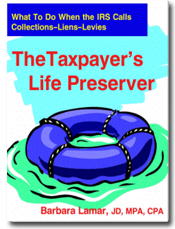| Characteristics |
Sole Proprietorship |
General Partnership |
Limited Liability Company |
S Corp |
Corporation |
| Formation |
Just one owner. No state filing required |
Two or more owners, called partners. No state filing required. |
State filing required; most states do not require more than one owner. Owners are called members |
State filing required. One or more owners, called shareholders. Restrictions on who can be an owner. |
State filing required. One or more owners, called shareholders. |
| Duration of Existence |
Dissolved if sole proprietor ceases doing business or dies |
Dissolves upon death or withdrawal of a partner unless safeguards are in place in a partnership agreement. |
Most states allow perpetual duration. |
Perpetual |
Perpetual |
| Liability |
Sole proprietor has unlimited liability |
All partners have unlimited liability |
Members not typically personally liable for the debts of the LLC, beyond the amount they invest in the LLC. |
Shareholders are typically not personally liable for the debts of the corporation beyond the amount they invest in the corporation. |
Shareholders are typically not personably liable for the debts of the corporation beyond the amount they invest in the corporation. |
| Operational Requirements |
Relatively few legal formalities. |
Relatively few legal formalities. |
Some formal requirements but less formal than corporations. |
Board of directors, officers, annual meetings, and annual reporting required |
Board of directors, officers, annual meetings, and annual reporting required |
| Management |
Sole proprietor has full control of management and operations |
Typically each partner has an equal voice, unless they have agreed otherwise. |
Members have an operating agreement (called regulations in Texas) that outlines management |
Managed by the directors, who are elected by the shareholders |
Managed by the directors, who are elected by the shareholders |
| Taxation |
Not a taxable entity. Sole proprietor pays all taxes |
Not a taxable entity. Each partner pays tax on his/her share of income and can deduct losses against other sources of income |
Members can elect to be taxed either as a partnership or a corporation. |
No tax at the entity level. Income/loss is passed through to the shareholders |
Taxed at the entity level. Also, If dividends are distributed to shareholders, dividend income is taxed at the individual level. |
| Pass Through Income/Loss |
Yes |
Yes |
Yes or No, depending on the election made by the members. |
Yes |
No |
| Double Taxation |
No |
No |
Yes or No, depending on the election made by the members. |
No |
Yes, if income is distributed to shareholders in the form of dividends. |
| Cost of Creation |
None |
None |
State filing fee required |
State filing fee required |
State filing fee required |
| Raising Capital |
Often difficult unless individual contributes funds |
Contributions can be made from partners, and more partners can be added |
Possible to sell interests, though subject to operating agreement restrictions |
Shares of stock may be sold to raise capital |
Shares of stock may be sold to raise capital |
| Transferability of Interest |
No |
No |
Possibly, depending on restrictions outlined in the operating agreement |
Yes, but must observe IRS regulations on who can own stock |
Shares of stock are easily transferred, in the absence of a Shareholder’s agreement that places limitations on transfers. |


